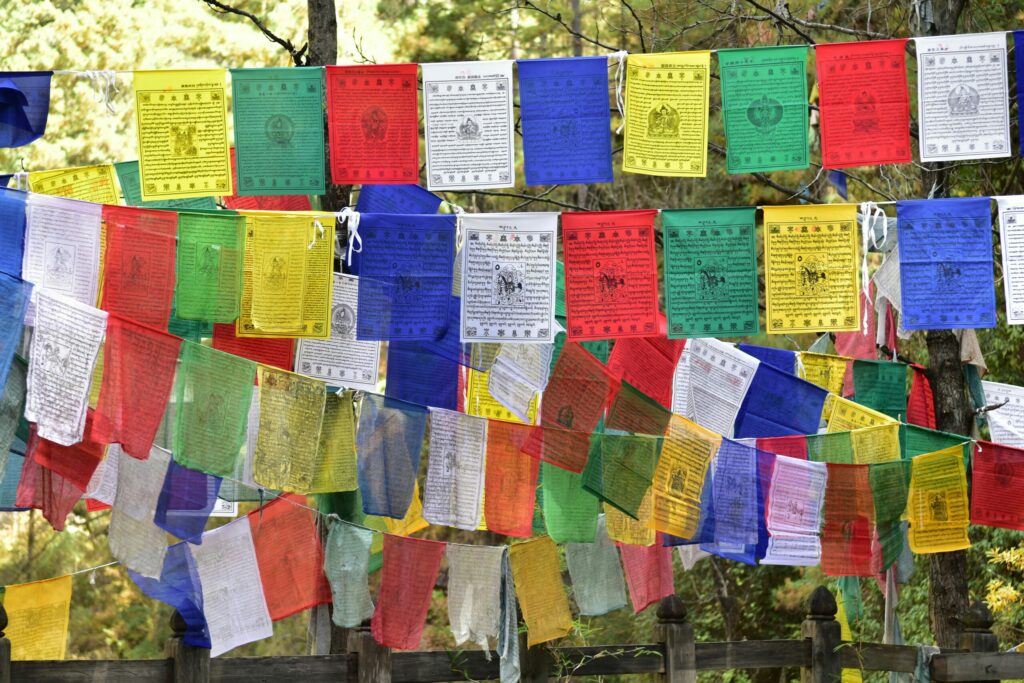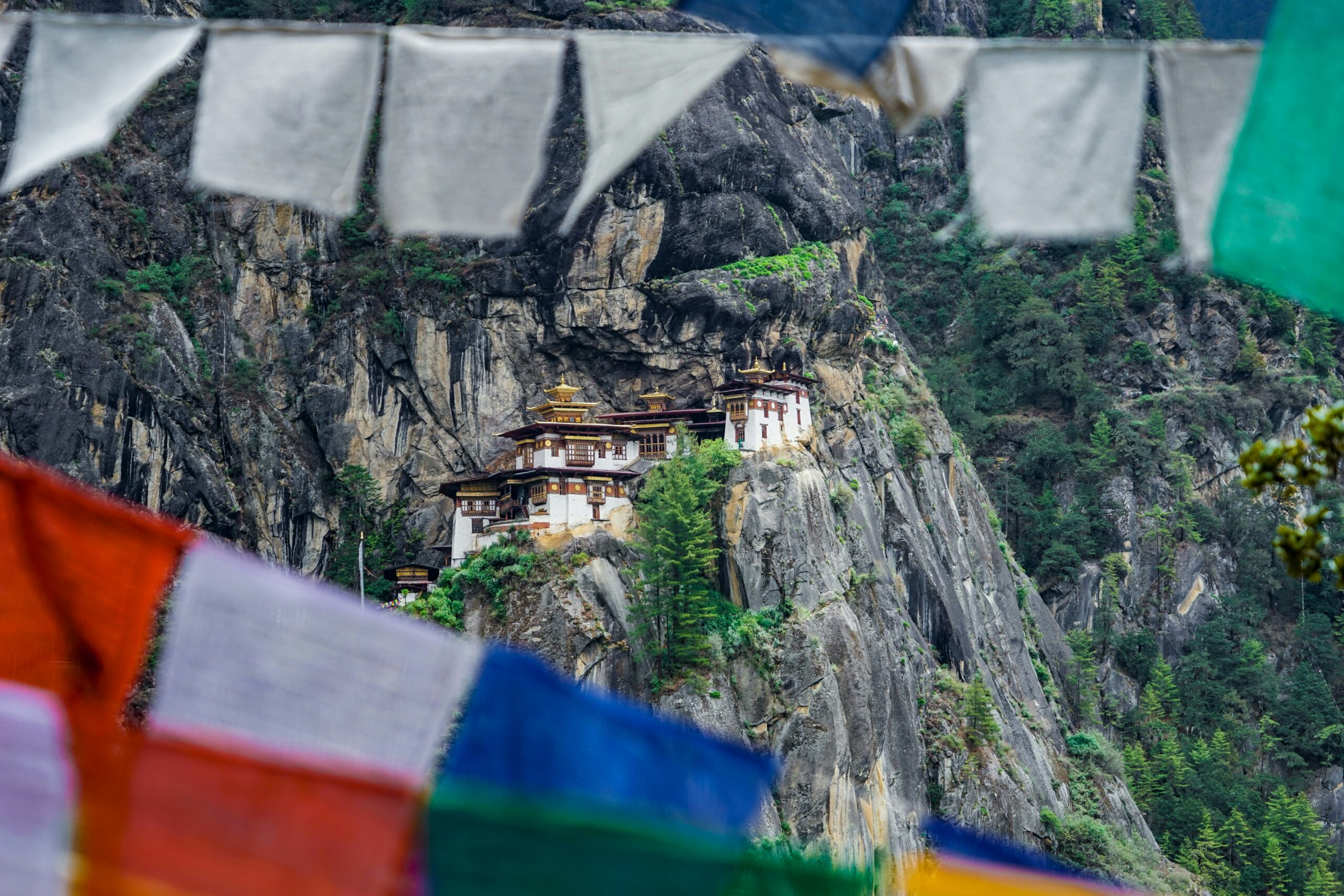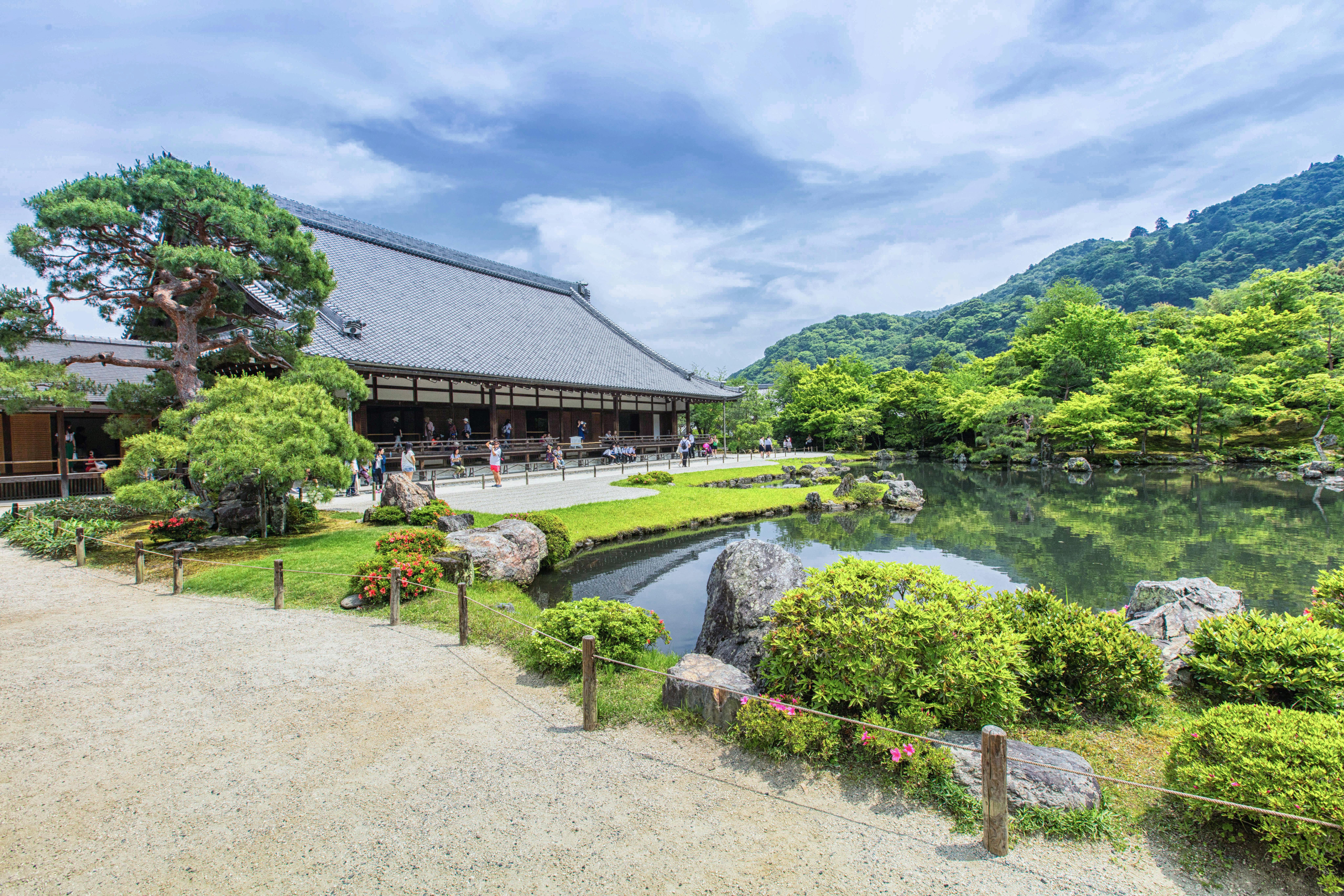In the pristine mountain valleys of Bhutan, where ancient traditions flow like mountain streams through daily life, colourful rectangular flags flutter against the backdrop of snow-capped peaks. These are prayer flags, the sacred symbols that carry spiritual significance far beyond their simple appearance.
Bhutan prayer flags represent one of the most visible expressions of the kingdom’s deep Buddhist faith. These vibrant banners serve as vehicles for compassion, wisdom, and healing energy. Each flag carries printed mantras, prayers, and sacred symbols. They are believed to be activated by the wind, spreading blessings across the landscape and to all sentient beings.
The most commonly visible are the horizontal lung-ta flags (carrying the symbol of windhorse, a mythical creature). There is the vertical darchor flags.
The tradition stems from the Bon religion, Tibet’s ancient pre-Buddhist faith. It was later embraced and enriched by Tibetan Buddhism. In Bhutan, this practice has flourished for over a millennium, becoming an integral part of the national spiritual landscape.
The five sacred colours
The traditional Bhutan prayer flags appear in five specific colours, each representing one of the five elements.
Blue symbolizes space and the limitless sky, representing wisdom and the vastness of consciousness. White embodies air and wind, signifying purity and spiritual cleansing. Red represents fire, embodying passion, energy, and the life force that drives compassion. Green symbolizes water, representing balance, harmony, and the healing power of nature. Yellow stands for earth, grounding us in stability, fertility, and the foundation of spiritual practice.
When hung together, these five colours create a complete spectrum of spiritual energy. They are meant to harmonize the elements within the practitioner and the environment.
Sacred timing and placement
In Bhutanese tradition, the hanging of prayer flags is a mindful spiritual practice. Auspicious dates are chosen based on the lunar calendar; like on festivals like Losar (New Year) or on full moon days. The flags are typically hung at dawn so that the morning breeze can begin carrying their blessings.
Location matters. Prayer flags grace mountain passes, where they catch the strongest winds, flutter from rooftops of homes and monasteries, mark sacred sites and pilgrimage routes, and adorn bridges spanning rushing rivers. Each placement is intentional, designed to maximize the distribution of positive energy.

five elements.
Beliefs and spiritual benefits
Bhutanese people believe that prayer flags generate merit for all beings. The wind touching the flags carries mantras and prayers to every corner of the earth, promoting peace, compassion, and healing. As the flags naturally fade and weather over time, this is seen as part of the natural cycle, teaching impermanence while releasing blessings.
The practice embodies the Buddhist principle of interdependence, recognizing that our well-being is connected to the well-being of all beings. By hanging prayer flags, practitioners express their wish for universal happiness and freedom from suffering.
Living traditions in modern Bhutan
Despite rapid modernization, Bhutan prayer flags remain central to Bhutanese life. They flutter from urban apartments in Thimphu as readily as from remote mountain villages. During times of illness, celebration or transition, many families hang new flags as offerings and requests for divine blessing. The practice continues to bind communities together through shared spiritual intention.
Crafting an authentic Bhutan prayer flag
Even though prayer flags can be purchased in markets throughout Bhutan, participating in the traditional making of a flag offers insight into this sacred practice. In remote villages, scholar-practitioners still maintain the ancient knowledge of flag construction. This includes selection of appropriate cloth to the precise application of sacred symbols and mantras.
These experiences typically unfold in the homes of learned individuals who have dedicated their lives to preserving Bhutanese spiritual traditions. Visitors sit cross-legged on handwoven carpets as their host explains the significance of each symbol. They also demonstrate the proper way to apply woodblock prints and share stories passed down through generations.
The process becomes a meditation. Participants learn to handle the sacred texts with reverence, apply ink with mindful precision, and understand the prayers they’re helping to create. The experience concludes with a blessing ceremony and the communal hanging of the newly created flags, creating a tangible connection between visitor and tradition.
A journey beyond tourism
This intimate cultural exchange offers something increasingly rare: in our connected world, an authentic spiritual encounter. Participants don’t merely observe tradition; they become temporary practitioners themselves, gaining insight into the Buddhist worldview.
Many visitors find that creating prayer flags in this traditional setting becomes a transformative experience, offering new perspectives on mindfulness, community, and spiritual practice that extend far beyond their time in Bhutan.
________________________________________________________________________________________________________________________
For travellers seeking authentic cultural immersion, participating in traditional prayer flag creation represents one of Bhutan‘s most meaningful experiences. Panache World facilitates intimate cultural encounters, connecting travellers with scholar-practitioners who welcome visitors into their homes and traditions. Contact us to know more.







